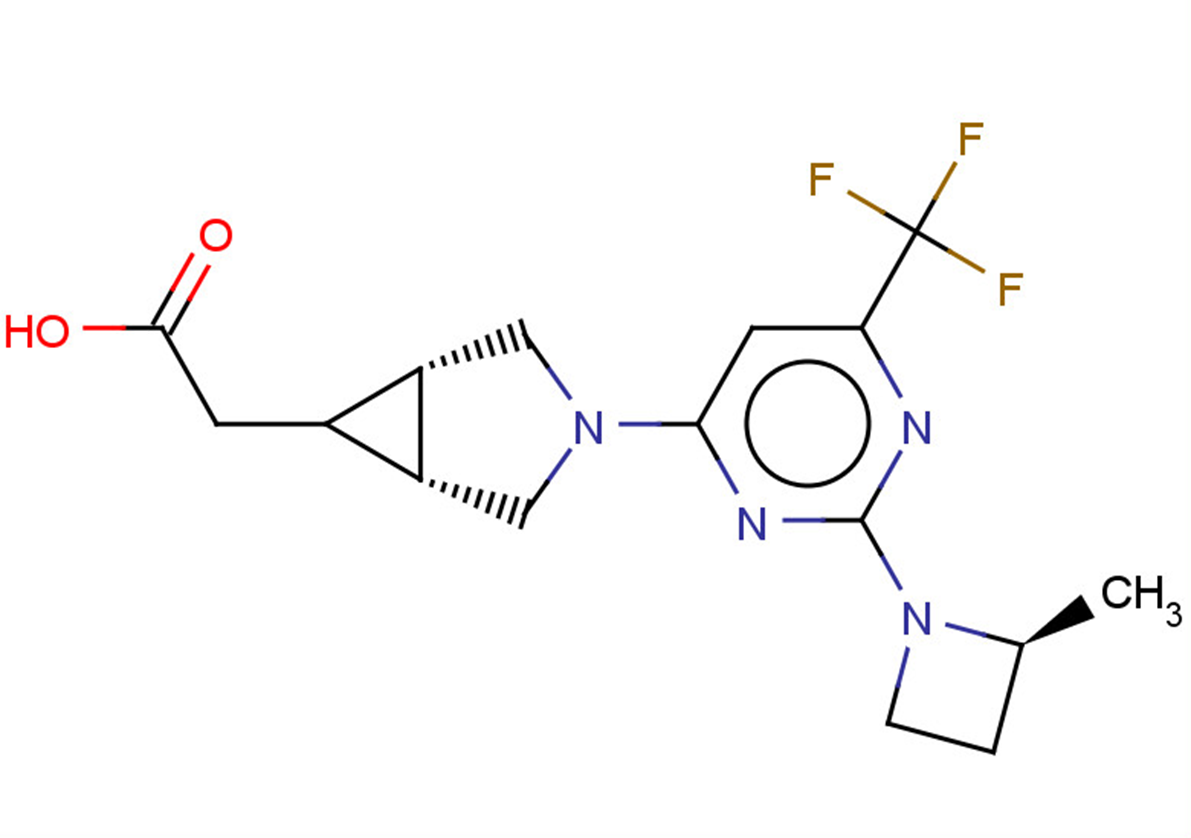
Ketohexokinase inhibitor 1
CAS No. 2102501-84-6
Ketohexokinase inhibitor 1( —— )
Catalog No. M23954 CAS No. 2102501-84-6
Ketohexokinase inhibitor 1 is a ketohexokinase inhibitor.
Purity : >98% (HPLC)
 COA
COA
 Datasheet
Datasheet
 HNMR
HNMR
 HPLC
HPLC
 MSDS
MSDS
 Handing Instructions
Handing Instructions
| Size | Price / USD | Stock | Quantity |
| 5MG | 500 | In Stock |


|
| 10MG | 713 | In Stock |


|
| 25MG | 1062 | In Stock |


|
| 50MG | 1431 | In Stock |


|
| 100MG | 1935 | In Stock |


|
| 500MG | 3888 | In Stock |


|
| 1G | Get Quote | In Stock |


|
Biological Information
-
Product NameKetohexokinase inhibitor 1
-
NoteResearch use only, not for human use.
-
Brief DescriptionKetohexokinase inhibitor 1 is a ketohexokinase inhibitor.
-
DescriptionKetohexokinase inhibitor 1 is a ketohexokinase inhibitor (IC50s: 8.4 nM and 66 nM for KHK-C and KHK-A, respectively).
-
In Vitro——
-
In Vivo——
-
Synonyms——
-
PathwayOthers
-
TargetOther Targets
-
RecptorKHK-A|KHK-C
-
Research Area——
-
Indication——
Chemical Information
-
CAS Number2102501-84-6
-
Formula Weight356.34
-
Molecular FormulaC16H19F3N4O2
-
Purity>98% (HPLC)
-
SolubilityDMSO:125 mg/mL (350.79 mM)
-
SMILESC[C@@H](CC1)N1c1nc(N(C2)C[C@@H]3[C@H]2C3CC(O)=O)cc(C(F)(F)F)n1
-
Chemical Name——
Shipping & Storage Information
-
Storage(-20℃)
-
ShippingWith Ice Pack
-
Stability≥ 2 years
Reference
1.SUBSTITUTED 3-AZABICYCLO[3.1.0]HEXANES AS KETOHEXOKINASE INHIBITORS. US 20170183328 A1
molnova catalog



related products
-
Transforming Growth ...
Transforming Growth Factor β1 Peptide, TGF - β1 (60 - 66), amide
-
WDR5-47
WDR5-47 is a potent small molecule to disturb the interaction of MLL1-WDR5 with IC50 value of 0.3μM.
-
Leteprinim
Leteprinim is an hypoxanthine derivative that stimulates in vitro neurite outgrowth and the production of adenosine and neurotrophins from astrocytes.



 Cart
Cart
 sales@molnova.com
sales@molnova.com


